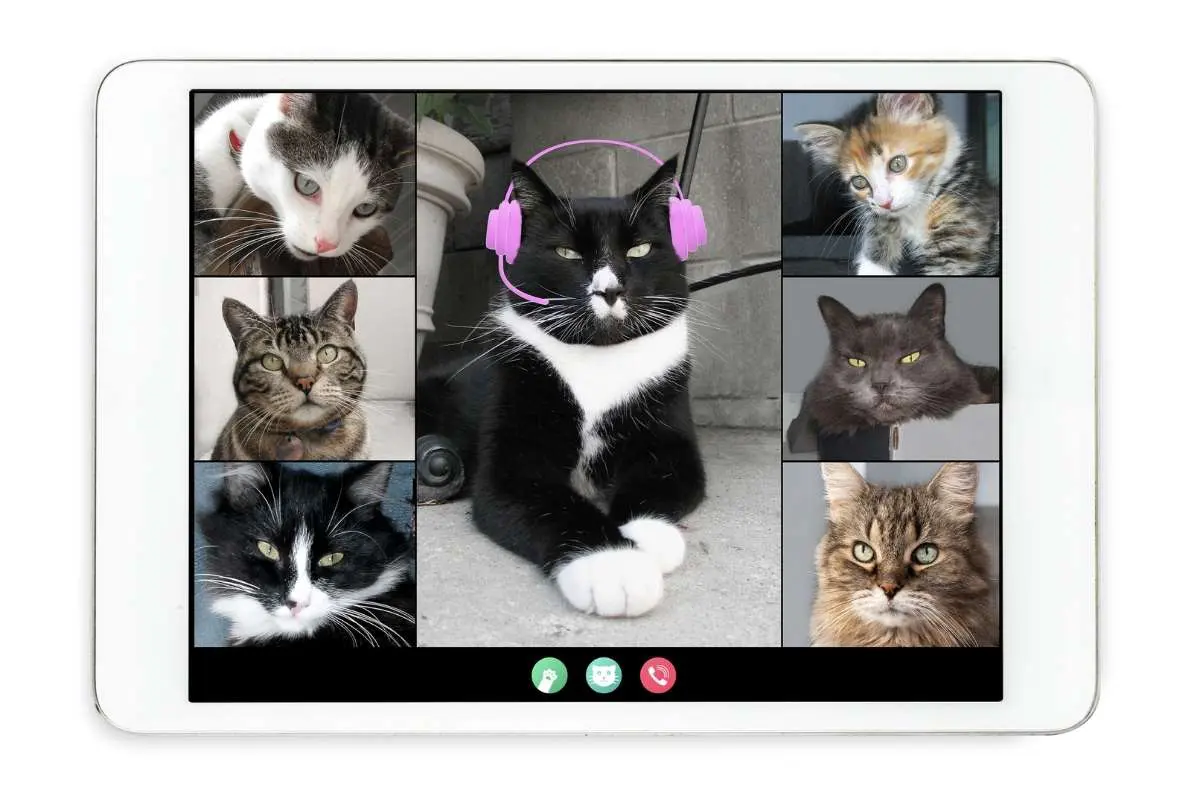
Is Your Business Ready to Embrace Hybrid Working
Hybrid working, the phrase on everyone’s lips, look set to redefine workplace futures across the globe. Since the COVID pandemic enforced abrupt changes to employee working patterns, more and more firms have embraced remote and flexible working. Lockdown accelerated the gradual digitisation of communal workplace premises. This proved that many firms possess the tools to adapt and thrive through hybrid working. Defining, streamlining, and implementing hybrid working strategies helps future-proof firms for a competitive and ever-evolving business environment.

What is Hybrid Working?
The ‘hybrid’ in ‘hybrid working’ refers to an employee’s mixture of remote and on-site working hours to conduct their workplace duties. This encompasses a broad range of work styles and structures, from remote workers who come to the office for occasional meetings, office workers with a weekly remote afternoon, or anything in between.
The ONS found that only 35% of employers offered work from home before the pandemic. However, employee demand for flexible hybrid work saw an unprecedented boom after the lockdown. A Microsoft survey found that 70% of workers want flexible hours, and almost 90% of workplace leaders agree. This employee drive tips the scales of productivity, unlocking business dividends in hybrid working innovations.
The Benefits of Hybrid Working
Hybrid working brings benefits to employers and employees alike. The most effective managers cultivate these benefits and harness them to develop a happy, healthy, and productive workforce on and off the premises.
1. It’s What the People Want
Employee desire alone gives employers enough of a motivator to incorporate hybrid working into their business strategies. Worker satisfaction slashes absences while bolstering productivity and commitment. Early studies show that employees will simply look elsewhere if businesses fail to provide flexible working
2. Hybrid Working Supports Employee Health
Of course, remote working became mainstream to flatten the curve of COVID-19 infection. While the vaccine roll-out mitigates some of the pandemic concerns, the change left an indelible mark on commercial culture, for better or worse. Even before COVID, bugs and flu cases regularly swept through workplaces, hindering productivity as sick leave multiplied. Hybrid working protects employees from infection, while also safeguarding their mental health.
Flexible hours can help accommodate for stress, burnout, anxiety, and other mental health issues. Working from home provides home comforts and cuts the stress of commuting, among other workplace pressures. These new, dynamic working strategies thereby help business interests by supporting their most important investment: people.
3. Streamlining Workforce Efficiency
Lockdown challenged the idea that working from home meant a day off, as millions adapted to productive remote office environments. Harvard research found that remote employees worked for an extra 48.5 minutes every day, spending more time focusing on work computers and company projects. While not always the case, remote working can allow specialised employees to bloom from home, adding variety and energy to the workforce.
Hybrid working also fosters cost efficiency, as businesses cut pricey real estate expenses. Saving on utilities, transport, and other physical costs frees funds for investments and profits. Again, flexible working strategies streamline schedules for employers and employees alike.
4. Maintaining the Work-life Balances
Cutting commutes saves workers plenty of time, as well as stress. Hybrid working thereby leaves the workforce free to reinvest this time in any way they choose, from morning exercise to nutritious home cooking or vital social time. Well-rounded lifestyles make for engaged, resourceful, and productive employees, strengthening firms from within.
5. Expanding Accessibility
While they can be boring and stressful, commutes also create serious obstacles for workers with disabilities or illnesses. Remote working offers a greater range of accessibility opportunities for many members of the workforce. This fosters a dynamic and diverse group of workers, and an accessible, forward-thinking brand.
Concerns Surrounding Hybrid Working
While hybrid work brings several benefits to employers and employees alike, it is by no means a perfect work solution beyond reproach. Each workplace strategy carries its own challenges. Understanding and identifying each challenge offers firms the best means of adapting to an efficient hybrid working solution.
1. Communication and Collaboration Becomes Distant

Digital communication, while contributing to vital functions in business operation, cannot always achieve the full spectrum of human connection. Real-life meetings and collaboration fosters familiarity and camaraderie. This cohesion, informed by physical proximity and body language, may be lost through cloud or screen communication.
Therefore, hybrid working employers need to keep a closer eye on team spirit, teamwork, and feedback communication to maintain work ethic and efficiency across multiple connected workplaces.
2. Employee Equipment or Lack Thereof
Every modern worker has an internet connection and a computer of sorts. However, not all internet connections and computers are fast and reliable enough for business. Employees may own inadequate equipment and resources, hampering hybrid working. Even if their hardware proves efficient enough to get the job done, their chairs and keyboards may fail ergonomic standards and cause eye, back, or wrist damage. Their workspaces may be too small or too noisy to conduct business adequately. In short, not every employee has the capacity to work from home effectively.
3. Disconnection and Administrative Workload
While some studies show increased productivity in remote work, others describe burnout and boredom. With disconnected workers away from the watchful eyes of management and bosses, malcontent can fester unchecked, as workdays slow to a crawl.
Where workers feel unable or unwilling to discuss their issues with senior staff, productivity tanks, endangering wellbeing and career prospects. Coupled with the changing administrative workload of checking in on employees in various locations, complacent firms let bright prospects slip through the net. However, more adaptive firms find dynamic solutions to renovate their strategies and galvanise their employees for hybrid working.
How to Improve a Hybrid Working Strategy
Businesses should view improving hybrid learning as a process, not a destination. Like the ever-changing state of health concerns and government advice, firms should take a flexible approach to their flexible working policies. Developing adaptive plans, for the short-term and long-term hybrid work developments, helps optimise benefits and combat concerns.
1. Implementing Time and Attendance Systems
Time and attendance systems offer smart solutions to evolving issues in hybrid working strategies. With digital rota and scheduling software, accessible on browser or mobile, these systems support managers to support employees. Aiding remote clock-ins, monitoring attendance, and honouring overtime and holidays, time and attendance systems guide firms into flexible futures. Logging bonuses and overtime, absences, and payroll in a database offers actionable insights into workforce health and productivity, celebrating the positives and mitigating the negatives from hybrid working.
Some time and attendance systems also offer integration with premises access control. This forms a bridge between digital and centralised workspaces, mirroring and supporting seamless hybrid working.
2. Leading by Example
Business leaders and managers form workforce role models, guiding employees on conduct, ethics, and ideals. Leading by example helps implement hybrid working from the top down, creating a template for flexible working success. Regular digital meetings run by experienced leadership guides workers to the potent opportunities which hybrid working offers.
3. Specialising Training
Even technologically literate employees struggle with the variety of newer software required for the hybrid workplace. Some workers may not have the familiarity to use technology at a professional level. They may also lack the confidence to ask for guidance. Implementing regular training and refresher sessions helps keep business running smoothly, and keeps staff at every level up to speed.
4. Assessing and Reassessing Hybrid Working Policies
President Eisenhower famously said that ‘plans are useless, but planning is indispensable’. The best way to keep strategies effective is to innovate and keep strategising. Research, figures, and feedback all help firms transition between short-term and long-term strategies. Regular meetings informed by data from time and attendance systems can help streamline policies for the future. Adjusting hybrid working plans adds variety to the work schedule. It also ensures that managers and employees know their voices are being heard.
5. Implementing Breaks and Social Time
While remote working helps resolve burnout, it cannot eliminate it entirely. During lockdown, for example, monotonous days felt more like sleeping at work than working from home. With employees shaping their own schedules in flexible working styles, workers may bite off more than they can chew, and experience burnout at home. The best hybrid working strategies enforce breaks and off days to refresh staff.
Asynchronous communication technology, such as Whatsapp or Sharepoint, aids flexibility by eliminating time and place specificity. Compared with real-life meetings, employees can answer whenever or wherever suits best. However, messages can build up and loom over-stressed employees. Companies like Channel 4 implement reprieve tactics like ‘no Zoom Fridays’ to combat burnout, to great effect. Efficient hybrid companies delegate and spread the load to maintain productivity alongside employee wellbeing.
Conclusions
Future-proofing captures the essence and purpose of workplace hybridity. Businesses with flexible strategies foster happy and healthy working environments, building strong reputations as forward-facing innovators. Besides increasing productivity and cutting costs, hybrid working also helps companies promote environmentalism and internationalism. Cutting commuting and embracing digitalisation saves emissions and fosters transferable digital skills.
Businesses that are ready to embrace hybrid working build from within, investing in themselves to sharpen their competitive edge.

Zoë Mouter is the joint owner and director of Egress Systems, a leading provider of time and attendance solutions. With two decades of experience in the workforce management sector, Zoë collaborates with HR, payroll, and IT experts to deliver tailored solutions across a diverse range of industries, including logistics, manufacturing, retail, hospitality, education, charities, waste management, and healthcare.
Before founding Egress Systems, Zoë honed her skills over 10 years as an IT professional at global data and technology companies Experian and Egg. During this time, she worked with multinational clients such as MBNA, Morgan Stanley, and Argos, specialising in the credit card processing sector.
Zoë holds a first-class degree in English Language and Literature from Liverpool University, alongside a Masters in Viking Studies and a TEFLA certification (Teaching English as a Foreign Language to Adults). While her focus has shifted from Viking history to Nordic walking, she enjoys expressing her creativity through ceramics, often crafting unique tea and coffee pots on her pottery wheel.
